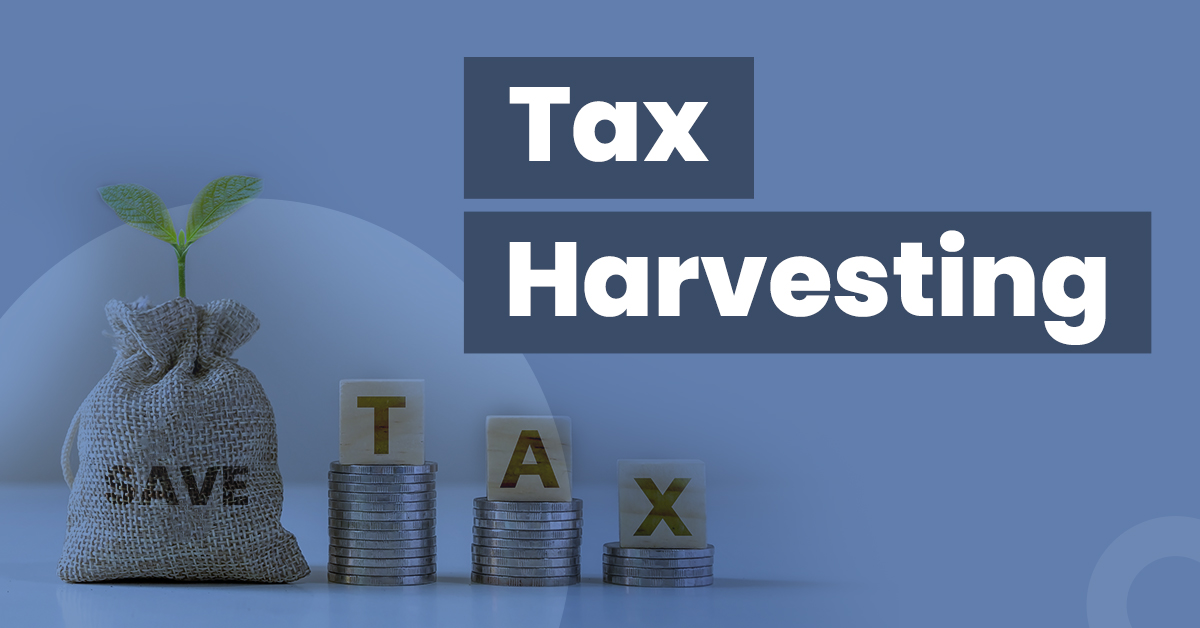Tax Harvesting: How to Save LTCG Tax on Mutual Funds?


Mutual funds are one of the most lucrative investments that help people in achieving their financial goals. Long-Term Capital Gain (LTCG) on mutual funds was tax-exempt before 2018, but it is taxable now. However, tax harvesting can significantly reduce the taxes applicable to your LTCG.
What Is Tax Harvesting?
As per Section 112A of the Income Tax Act, 1961, equity investors must pay LTCG tax at 10% if their capital gains exceed Rs. 1 lakh in one financial year. However, people can use tax harvesting to reduce their taxable amount. This financial strategy can even reduce the tax amount to zero.
The fundamental concept of tax harvesting is to sell off the mutual fund units eligible for LTCG tax and then repurchase them at the ongoing rate. In other words, investors can redeem their mutual fund units and repurchase them. Let’s see how it works:
How Does Tax Harvesting Work?
When an investor sells their equity fund units and buys them immediately at the ongoing rate, it increases the acquisition costs of the units. It also effectively lowers the amount taxable from LTCGs during the redemption year. However, it does not affect the final value of the mutual fund units as you sell and buy at the same price.
An effective way to engage in tax harvesting is to sell off equity fund units at the end of the year and book LTCGs up to Rs. 1 lakh, as it is completely tax-exempt. However, the investor shall buy back the mutual fund units immediately. At times, people wait too long to reinvest or reinvest only partially. When the money comes into the bank, some routine purchases become essential, and the money gets spent, hampering your financial goals.
Let us understand the concept of tax harvesting with an example:
Raj invested Rs. 6,00,000 in an equity mutual fund on January 12 2021. On January 18 2022, this investment value became Rs. 6,80,000. Therefore, if Raj redeems his mutual fund units, he will gain Rs. 80,000 and will not be required to pay any taxes. This is because long-term capital gains are taxable only if the gains exceed Rs. 1,00,000 in a financial year.
Next, Raj invested the entire amount of Rs. 6,80,000 immediately after redeeming the units. So, the entire investment cost was reset to Rs. 6,80,000 with the new investment date. Now, if the investment value increases to Rs. 7,30,000 after 12 months, the capital gain Raj will enjoy without paying taxes after redeeming his units will be Rs. 50,000 as this amount will still be less than the Rs. 1,00,000 limit of LTCG taxation.
If Raj had not redeemed and invested his amount, his long-term capital gains would have been Rs. 1,30,000 (Rs. 7,30,000 – Rs. 6,00,000), for which he had to pay a 10% tax. In that situation, Raj would have to pay Rs. 3,000 in LTCG tax, which he saved with tax harvesting.
Individuals can use tax harvesting on their mutual funds even if they invest via SIPs (Systematic Investment Plans). But if they redeem their mutual fund unit and do not immediately reinvest, the strategy will be useless.
What Is Tax Loss Harvesting?
Now let us explore another tax-saving concept—tax loss harvesting. This is a financial strategy that investors can use to reduce their tax liability by booking losses. Here, investors sell off some of their mutual fund units at a loss to reduce the tax liability on the LTCG earned on equity.
Generally, investors engage in tax loss harvesting towards the end of a financial year when they have to file Income Tax Returns. However, people can use this strategy throughout the year in a planned way to consistently keep their taxable capital gains at a low level.
If an equity fund or a particular stock sees a continuous price decline, investors will lose confidence in it. After selling off such units, investors face long-term capital loss, which can be offset by the long-term capital gains they have earned from other equity instruments.
Another critical factor that investors need to remember when it comes to tax loss harvesting is that capital losses can be carried forward for a maximum of 8 assessment years. So even if one cannot use their capital loss to decrease the taxes on capital gains in one year, it can be offset in coming years.
Let us understand the concept of tax-loss harvesting with an example:
Arun invested Rs. 3,00,000 in an equity mutual fund on January 10 2019. A year later, the value of his investment became Rs. 2,70,000. Thus, the long-term capital loss is Rs. 30,000. Now, suppose Arun had received an LTCG of Rs.1.4 lakh from another equity fund in January 2020; he is Rs.40,000 above the tax limit. However, he can offset these gains with the losses as his total LTCG will be Rs. 10,000 (40,000-30,000) and the tax liability wou;d be Rs. 1,000.
Suppose Arun didn’t have any capital gains in 2020, but three years down the line, he sells a long-term equity investment and makes Rs. 1.5 lakhs in capital gains. Since he is Rs. 50,000 above the limit, he can reduce this amount in the tax calculation. His effective LTCG will be Rs. 20,000.
How Can You Plan LTCG Tax Harvesting?
There are two ways a person can plan LTCG tax harvesting:
- First, if investors have adequate knowledge, they can formulate and execute their LTCG tax harvesting plans.
- If the investors do not have enough time or knowledge, they can take the help of qualified professionals or investment companies to help execute their tax harvesting plans.
Important Points to Consider Before Tax Harvesting
Listed below are some of the important points investors need to remember before tax harvesting:
- An investor can formulate plans for tax harvesting only after holding the mutual fund units for at least 12 months.
- If you own your equity investments for less than 12 months, they will be liable for Short-Term Capital Gains (STCG). The STCG tax rate is 15%, higher than the LTCG tax.
- In addition, some Asset Management Companies (AMCs) charge an exit load when people redeem their units or exit a scheme. Exit load is a pre-specified value of the NAV (Net Asset Value) of an investor’s mutual fund units. It is an exit penalty investors must pay if they exit a fund before the stipulated time.
- It is vital for investors to read the scheme-related documents thoroughly to check the exit load and expense ratio applicable to a mutual fund.
- If transaction costs and brokerage fees are high, then selling and repurchasing mutual fund units will become very expensive and will hurt more than it will do good.
- The value of the mutual fund units needs to increase over time to realise long-term capital gains.
- Another way to save taxes using your mutual fund investments is to invest in an ELSS (Equity-Linked Savings Scheme). By investing in ELSS, you can claim a tax deduction of Rs. 1.5 lakhs in a financial year under Section 80C of the Income Tax Act.
Some Crucial Points to Remember for Tax Loss Harvesting
Given below are specific points that investors should remember before engaging in tax-loss harvesting:
- Investors can set off long-term capital losses against long-term capital gains only. However, they can offset short-term capital losses against both LTCG and STCG.
- Before implementing tax-loss harvesting, calculate the entire tax liability before selling off investments at a loss to see if it is saving you money.
- Remember that tax-loss harvesting is a valuable strategy just for saving taxes; it is not beneficial as an investment strategy.
Final Word
Many investors are unaware of tax harvesting, and some feel it is unimportant. However, it is essential to reduce the amount payable as tax. It becomes necessary when the investment portfolio of the investor becomes big.
Frequently Asked Questions
Is tax harvesting expensive?
The expenses involved with saving taxes, such as brokerage fees and security transaction tax, may negate the benefits of tax harvesting if the investor does not plan it carefully. Moreover, these associated costs may make tax harvesting more expensive rather than saving money.
Can I engage in tax loss harvesting when I don’t face any loss from equity investments?
Tax loss harvesting enables investors to use capital losses to offset the capital gains earned in the same or coming financial years. So, people can use tax harvesting to offset future tax liabilities if they do not face any loss from equity investments today.
Can I do tax harvesting in case of short-term capital gains?
Investors can use the tax harvesting strategy for LTCG only. However, they can use tax loss harvesting to reduce their taxable amount for long-term and short-term capital gains. Generally, people undertake tax loss harvesting more for STCGs as it attracts a higher tax rate than LTCGs.



